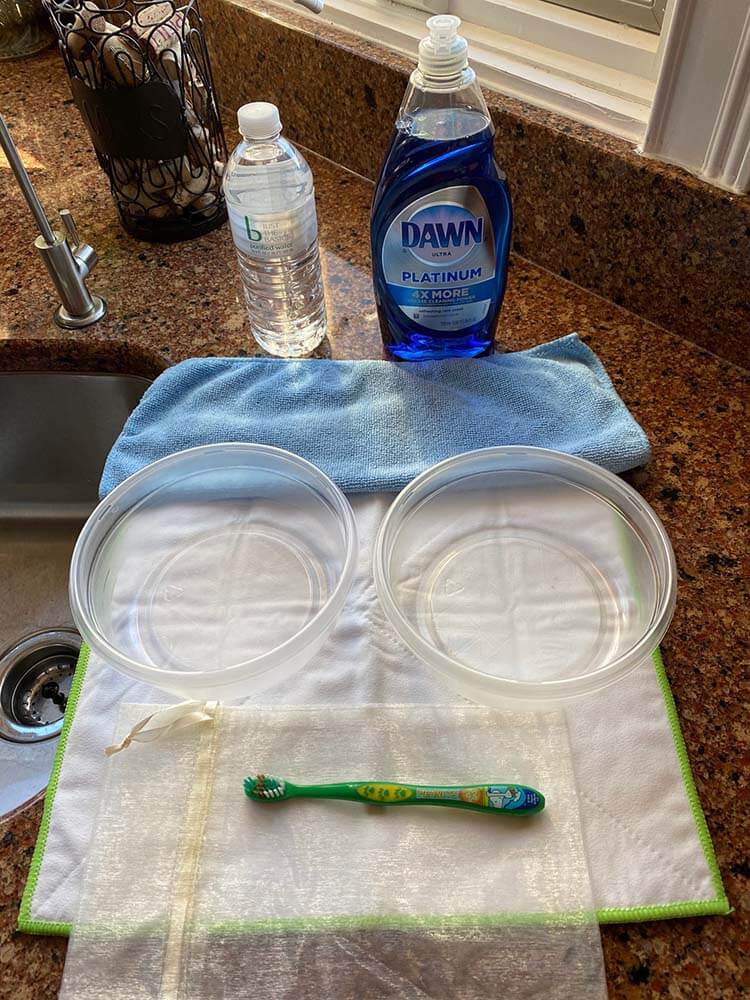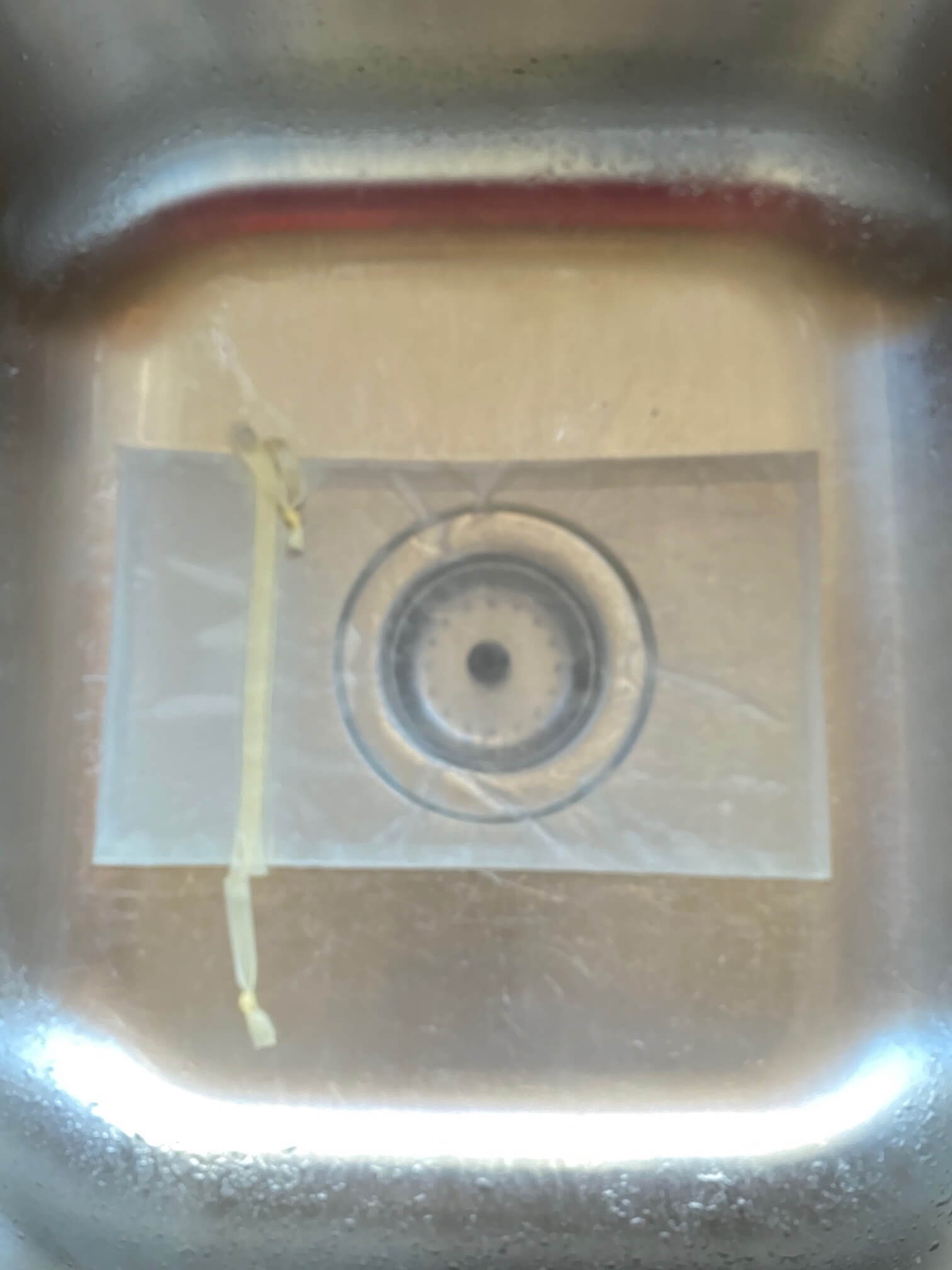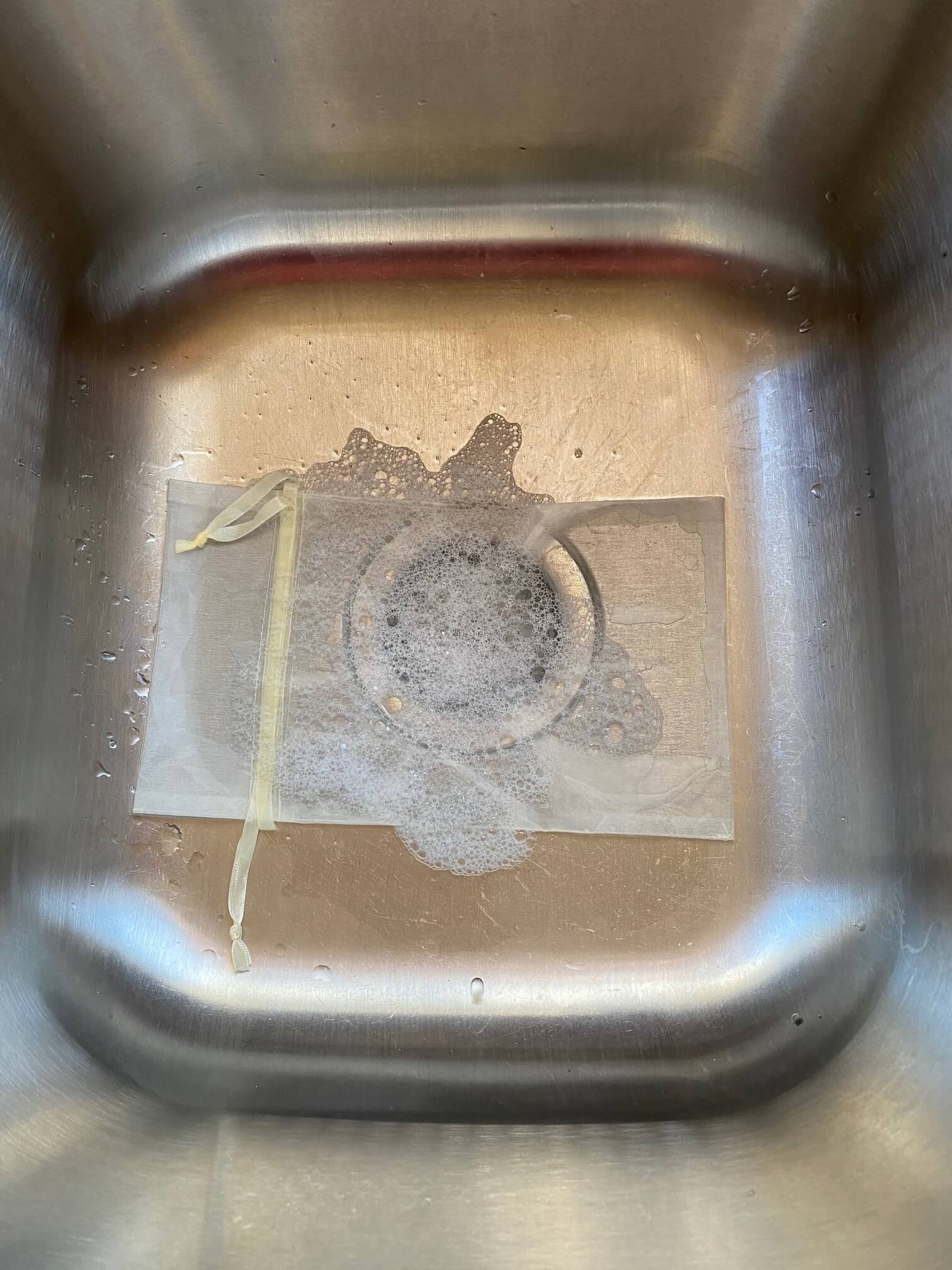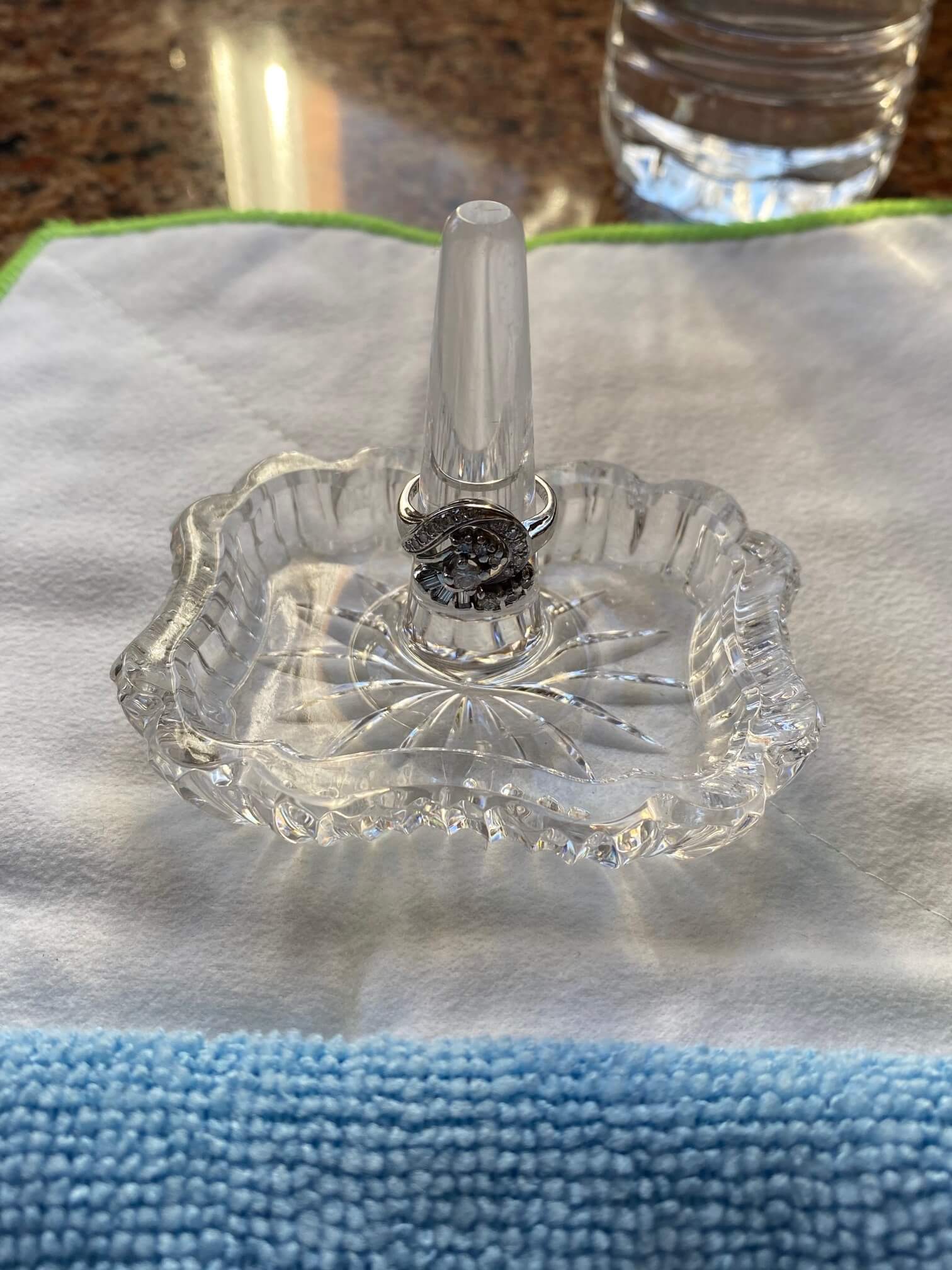Even the most beautiful jewelry can lose its sparkle, shine and luster as a result of plain old everyday living. The dust, dirt and grime from normal wear and handling can make your fabulous new ring, bracelet, or earrings look dull and lifeless. Contact with body oils, sweat, lotions, soap, cosmetics and air pollution leaves smudges, haze and scum on the metal and gemstones. In particular, many of the gemstones used in our 100 East Fine Jewelry have an affinity for oils and lotions which can cause them to appear dull.

According to a recent survey of jewelers, the number one mistake jewelry owners make is not cleaning their jewelry frequently enough. So, how often should you clean your gemstone jewelry? There’s no single, right answer that applies to every person, situation and jewelry piece. Gemstone jewelry cleaning frequency is driven by a combination of frequency of wear, the environment the jewelry is exposed to and the jewelry item design. The best gauge of cleaning frequency is simply to periodically inspect it. If it’s starting to look dull, having lost some of its sparkle or shine, it’s time to clean it. If you wear a jewelry item daily, such as an engagement or wedding ring, it probably requires cleaning every few weeks. For all other jewelry, periodically give it the eye test.
So, what can you do when you notice your jewelry is starting to lose its sparkle and shine? It’s not practical to run to a jeweler every time this happens. The best solution is to clean the jewelry yourself. The problem with this is knowing the proper technique for cleaning your jewelry without damaging it. If you’ve performed any research on cleaning jewelry, you see steam cleaners, ultrasonic cleaners, liquid jewelry cleaners and a host of household items that are said to work on your jewelry.



Can You Clean Your Gemsotne Jewelry Yourself?
A major concern with DIY cleaning is some materials and techniques are fine for one type of jewelry or gemstone, but will damage others. For example, since we use a number of different gemstone varieties, we don’t recommend steam or ultrasonic cleaners or the bottled liquid jewelry cleaners often provided in many jewelry stores. Some of the gemstones used in our jewelry can be damaged by the heat or vibration of the steam and ultrasonic cleaners or by the chemicals in the bottled liquid cleaners. I saw one on-line article recommending creating a chart for all your jewelry and all your gemstones to keep track of appropriate cleaning materials and techniques for each piece. I don’t see many people doing that!
We recommend one cleaning process for all your jewelry, whether it be 100 East jewelry, Sas E Gems jewelry, Gordon's Curated Selections or some other brand. The materials required include gentle dish soap (not a strong detergent), a soft child’s toothbrush, small wooden toothpicks or water pic, a lint-free cloth and some distilled or treated bottled water.
SPECIAL NOTE: Pearls, opal and other organic and porous gemstones require special care during cleaning. Additional cleaning requirements are found at the end of this blog.
How To Clean Luxury Gemstone Jewelry
- Pick a location that is either free of drains or where the drain can be stopped and covered to prevent the jewelry or any gemstones which are loose and might work free from being lost.
- Add a touch of gentle dish soap to a bowl of lukewarm water.
- Place the jewelry in the bowl of lukewarm soapy water and let it soak for at least a half hour. NOTE: Extended soaking is not advised for pearls, opals and turquoise. They should be cleaned after a short soaking.
- Use a soft baby’s toothbrush to gently clean the jewelry. Do not scrub, as this could move or bend the prongs holding the gemstones in place. You may want to let the items soak a while longer and repeat this step.
- It can also be helpful to use a water pic to pinpoint spray areas that are harder to clean. A small wooden toothpick can also help to gently pick out accumulated dirt and oils.
- After cleaning, place your jewelry in a fine-mesh strainer and rinse. I prefer to use distilled water in a small plastic dish for rinsing soap from the cleaned jewelry.
- Place the clean jewelry on a soft, lint-free cloth, not on a hard surface like a counter top, being careful not to hit or bang the jewelry or gemstones.
- To dry the jewelry pieces, gently pat them with the lint-free cloth, taking care not to snag the prongs. Let the piece air dry to remove water from hard to get at spots.
- When done, before emptying the bowl and sink, check them and the entire work area carefully to make certain no jewelry or gemstones could be lost down the drain.
SPECIAL NOTE: The process of cleaning your jewelry offers a great opportunity to carefully inspect each piece. This may help you find loose stones, cracked and broken prongs, etc. which could allow you to repair the item before expensive stones are lost or more expensive repairs are needed.
Sterling silver jewelry poses an additional cleaning issue; tarnishing. Tarnish occurs when the copper portion of the silver alloy comes in contact with ozone, hydrogen sulfide or sulfur. To slow the rate of tarnishing, 100 East Fine Jewelry will include a tarnish resistant bag for you to use when storing your sterling silver jewelry. We also recommend storing it in an air-tight container, such as a zip-lock bag (not for pearl-containing items) or a lined jewelry box.
To keep your sterling silver looking like new, occasionally the tarnish must be removed. All of our sterling silver jewelry is made of beautiful, high quality and delicate materials. They can contain just about any variety of gemstone, including very delicate mother of pearl and cultured pearls. Do not use most commercial or do it yourself jewelry cleaners and tarnish removers or polish. There is a tarnish removal product we use which is gentle on even the most delicate gemstones including pearls. We provide the name of the product with every sterling silver jewelry piece we sell. The tarnish removal process we recommend is:
- First, follow the general cleaning instructions detailed above; cleaning with a gentle dish soap and child’s soft bristled tooth brush and drying with a lint-free cloth.
- Once the dirt, grime and finger oils are removed, the jewelry piece will need to be cleaned with the very delicate tarnish removal product we recommend. The product comes complete with instructions on proper use.
CLEANING PEARL, OPAL AND OTHER ORGANIC AND POROUS GEMSTONE JEWELRY
Wash pearls, opals, turquoise and other soft gemstones in warm water with a small amount of mild dishwashing soap (not detergent). Do not soak them in the solution as you do with other gemstones, since they are porous and could absorb some of the soapy water. Even a soft child’s toothbrush can be too abrasive for pearls, opals, turquoise and other soft gemstones. Try an extremely soft make-up brush instead. Rinse the gemstones in clean distilled water.
Pearls are often strung with silk in strands for bracelets and necklaces.Usually, the strand is knotted between each pearl to avoid abrasion and prevent loss should the string break. Be careful not to stretch the thread while washing. After washing, wrap your pearl strand in a thin, damp cotton towel to dry. The wet silk thread can attract dirt, so don’t touch your strand until it is completely dry (this can take up to 24 hours).
Happy Cleaning!!
